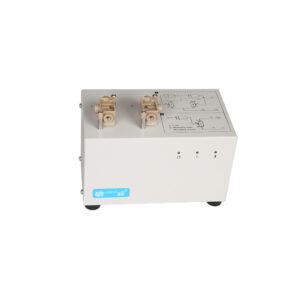Peristaltic transfer pumps have become a popular choice for various industries due to their versatility, надежность, и простота использования. This article aims to provide an overview of peristaltic transfer pumps, focusing on their viscosity range capabilities and the importance of peristaltic pump controllers. We will delve into the features, преимущества, and potential applications of these pumps, highlighting their significance in fluid transfer processes.

Role of Peristaltic Transfer Pumps
Peristaltic transfer pumps utilize a unique pumping mechanism that involves squeezing and releasing a flexible tube to create a vacuum and transfer fluids. Эти насосы имеют ряд преимуществ., including gentle pumping action, self-priming capabilities, and the ability to handle a wide range of fluids, making them suitable for various industries such as pharmaceuticals, еда и напитки, и химическая обработка.
Key Features:
- Gentle pumping action that minimizes shear and damage to sensitive fluids.
- Self-priming capability, eliminating the need for manual priming.
- Совместимость с широким спектром жидкостей., в том числе коррозионные и вязкие вещества.
- Простота обслуживания и замены трубок..
Benefits:
- Accurate and consistent fluid transfer without contamination.
- Reduced downtime and increased productivity.
- Cost-effective solution with low maintenance requirements.
- Versatility in handling different fluid types.
Application of Peristaltic Transfer Pump
Peristaltic transfer pumps, also known as tube pumps or hose pumps, are versatile tools used in a wide range of applications that require gentle and precise fluid transfer. Here are some common applications of peristaltic transfer pumps:
- Chemical Transfer: Peristaltic pumps are widely used for transferring various chemicals, including corrosive and abrasive fluids. Their gentle pumping action and the fact that the fluid only comes into contact with the tubing make them suitable for handling sensitive and aggressive chemicals without contamination or damage.
- Laboratory and Research: Peristaltic transfer pumps are commonly used in laboratories and research facilities for precise dosing and transferring of fluids. They are ideal for applications such as sample preparation, хроматография, cell culture feeding, and media transfer, where accurate and controlled fluid delivery is critical.
- Фармацевтическое производство: Peristaltic pumps find applications in pharmaceutical manufacturing processes that require accurate and sterile fluid transfer. They are used for dosing active pharmaceutical ingredients (API), transferring sterile solutions, filling vials or syringes, and other tasks that demand precision and sterility.
- Пищевая промышленность и производство напитков: Peristaltic transfer pumps are employed in the food and beverage industry for the gentle and hygienic transfer of liquids. They are used for dosing ingredients, transferring sauces and dairy products, bottling, and pumping shear-sensitive fluids like fruit juices and beverages.
- Water Treatment: Peristaltic pumps are utilized in water treatment processes for transferring chemicals, dosing additives, and metering solutions accurately. They are commonly employed in applications such as pH adjustment, disinfection, coagulant and flocculant dosing, and adding corrosion inhibitors to water systems.
- Environmental Sampling: Peristaltic transfer pumps are extensively used in environmental monitoring and sampling applications. They are used for collecting water samples, groundwater remediation, air sampling, and other tasks that require accurate and representative fluid collection.
Introduction of Перистальтический насос Viscosity Range
The viscosity range that peristaltic pumps can effectively handle depends on several factors, including the pump design, tubing material, tubing size, and motor power.In general, peristaltic pumps are capable of handling fluids with viscosities ranging from low to moderately high. Some peristaltic pumps can handle fluids with viscosities up to 10,000 centipoise (cP) or even higher, depending on the pump specifications.
When selecting a peristaltic pump for a specific application, it is essential to consider the expected viscosity range of the fluid being pumped. Manufacturers typically provide guidelines and specifications regarding the recommended viscosity range for their peristaltic pump models, helping users make informed decisions.
Peristaltic Pump Controllers: Helper for Optimizing Peristaltic Transfer Pumps
Peristaltic pump controllers play a crucial role in optimizing the performance and functionality of peristaltic transfer pumps. These controllers provide precise control over flow rates, направление, and other parameters, ensuring accurate and consistent fluid transfer. They also offer features such as programmable dosing, Дистанционное управление, and data logging, enhancing the efficiency and automation of fluid transfer processes.
Функции:
- Accurate control of flow rates for precise dosing and dispensing.
- User-friendly interfaces for easy operation and monitoring.
- Programmable settings for customized fluid transfer processes.
- Интеграция с системами автоматизации для бесперебойного управления технологическими процессами..
- Safety features such as alarms and emergency stop functions.
Benefits:
- Improved accuracy and repeatability in fluid transfer processes.
- Enhanced process control and optimization.
- Reduced human error and increased productivity.
- Real-time monitoring and data logging for process analysis and validation.
Peristaltic transfer pumps offer a versatile and reliable solution for fluid transfer in various industries. Their ability to handle a wide range of viscosities makes them suitable for diverse applications. The integration of peristaltic pump controllers further enhances their performance, providing precise control and automation capabilities. By utilizing peristaltic transfer pumps and controllers, industries can achieve accurate and consistent fluid transfer, leading to improved productivity, reduced downtime, and enhanced process control.